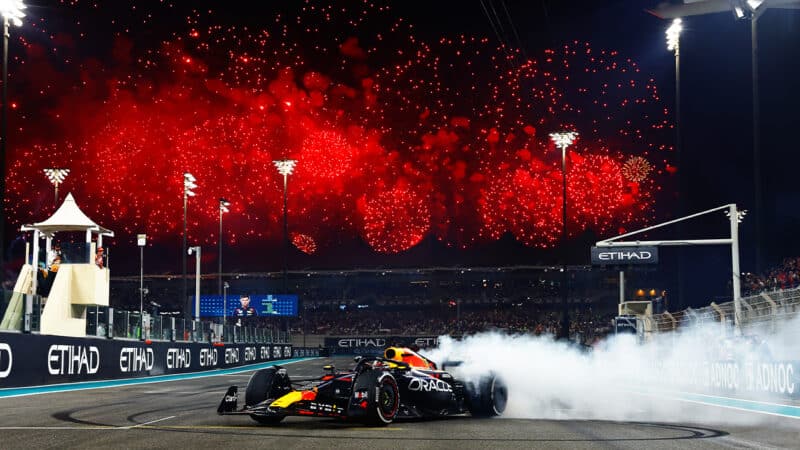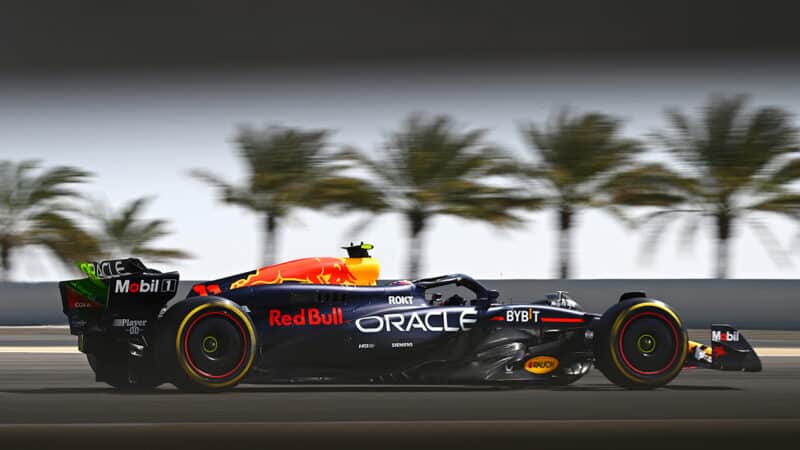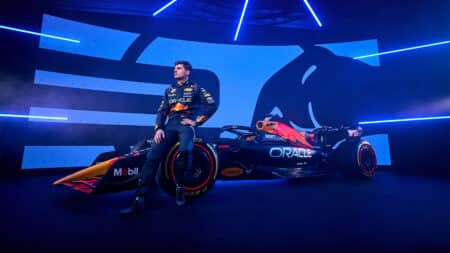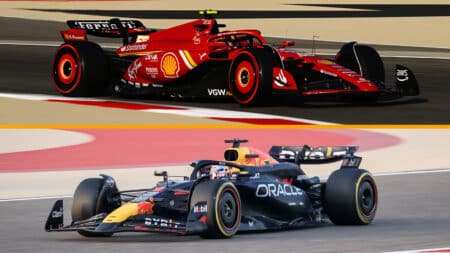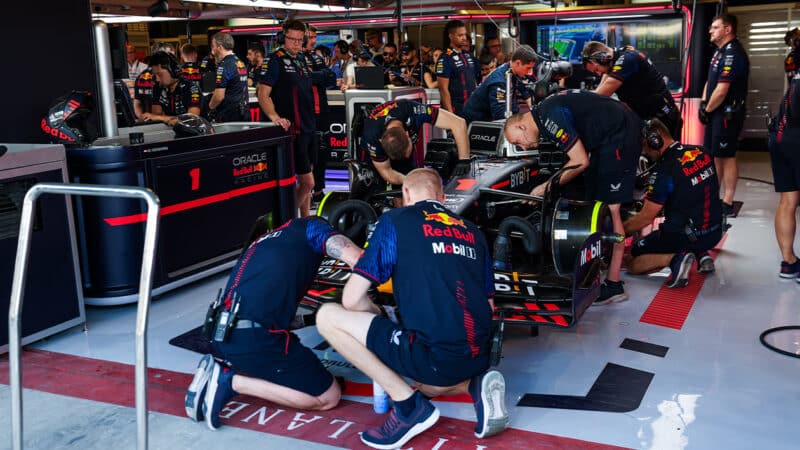That wasn’t the only piece of development, either. There were further update packages too that went somewhat below the radar, partly because of the timing they were introduced.
“The last one was Singapore, that update was not one many expected and it was a bit of a risk because Singapore is not really a track where you update the car. We had a very bad weekend there and we thought that the update was creating the issue, but we verified it the weekend after at Suzuka and everything came back to normal. We proved it was not massively wrong.
“I think it’s the same for everybody, that clearly we wanted to improve the low-speed performance. That is what we are trying to chase on every update, and in Singapore that’s why we had the doubt because we pushed the boundaries quite far and thought we had an issue. But it wasn’t due to that.”
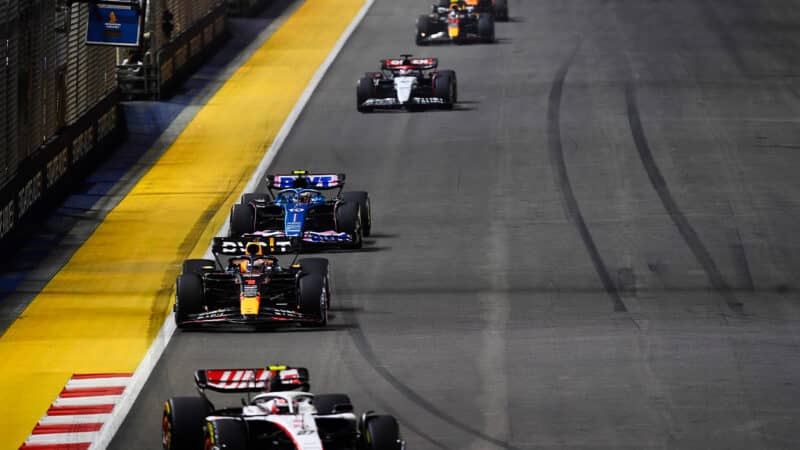
Singapore saw Red Bull off the pace for the only time in 2023
Rudy Carezzevoli/Getty via Red Bull
The focus with RB19 was on low-speed performance at high ride heights, and Red Bull was working out the best way to spend both the budget financially but also in terms of time spent on the car by personnel.
Planned developments were reduced
“We updated the car. Maybe not as planned at the beginning because based on the relative performance to the others we didn’t want to overspend on the development and have to make savings somewhere else. We just said we would reduce our development to be able to spend the money in a better way for the future.
“Your internal capacity to make updates and manufacture everything is affecting what you do. If you make more internally it costs you less. So first of all if the car is performing well during the first five or six races then you start to plan to do more internally and less externally to not rush the update. If you are in a fight and you need to do anything you can, you do more externally and try to put more updates on the car at the beginning of the season than at the end.”
2024 car quickly became the development priority
Once Red Bull saw it had an advantage that wasn’t going to put it under pressure, then the work on the RB20 could become more intense, with focus on parts that could benefit the previous car tailing off.
“We planned to do 50:50 at one point, and based on our performance we switched it more towards 80:20, and after that even more … But to make this car this year, some aspects of the car could be done last year if you were fundamentally in the fight.”
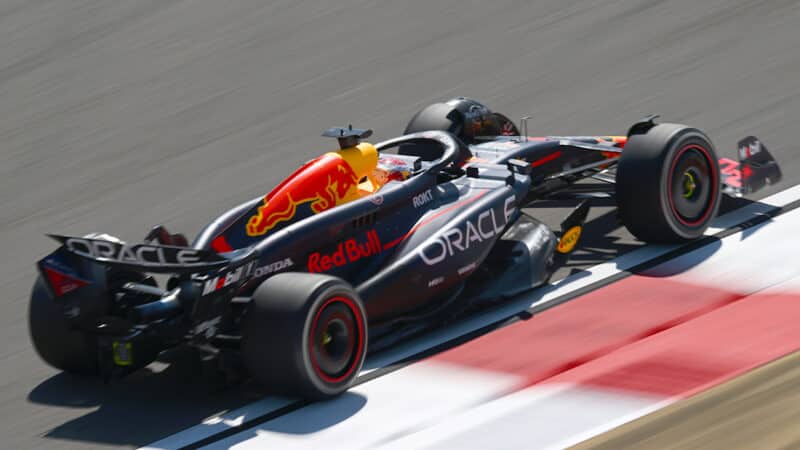
This year’s concept was fixed, but got more attention thanks to early 2023 success
Clive Mason/Getty via Red Bull
Wache estimates there were a couple of tenths of a second improvement that theoretically might have been achievable from the RB19 had development remained higher on that car, but he also insisted that doing so would not have prevented the RB20 from looking the way it does. Following this year’s concept was not fully contingent on having such breathing room last season.
“I don’t think so, I think it would be the same type of thing, just maybe the details that nobody sees and the performance you can extract from this one would not be at the same level, for sure. Some details would not be as much, but I would say the concept would be similar.”
